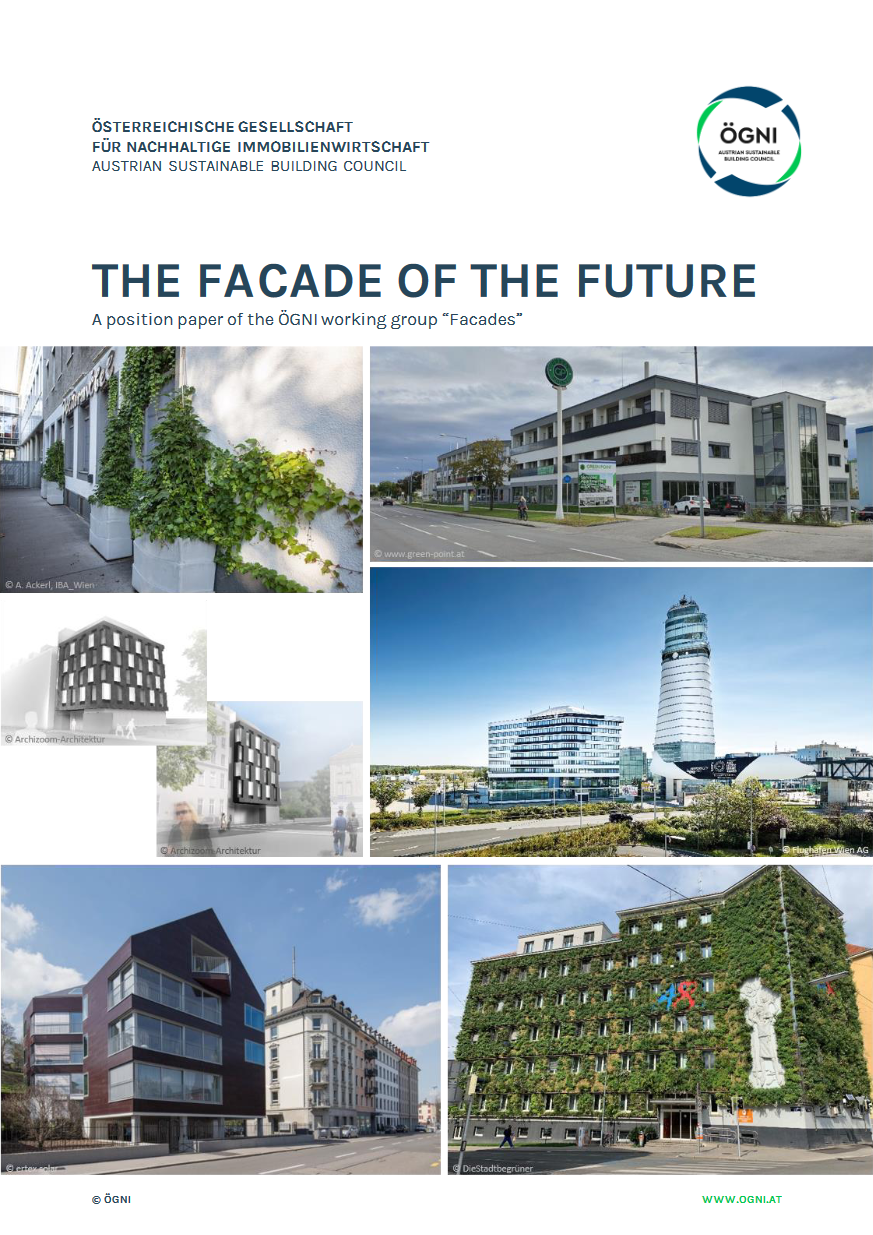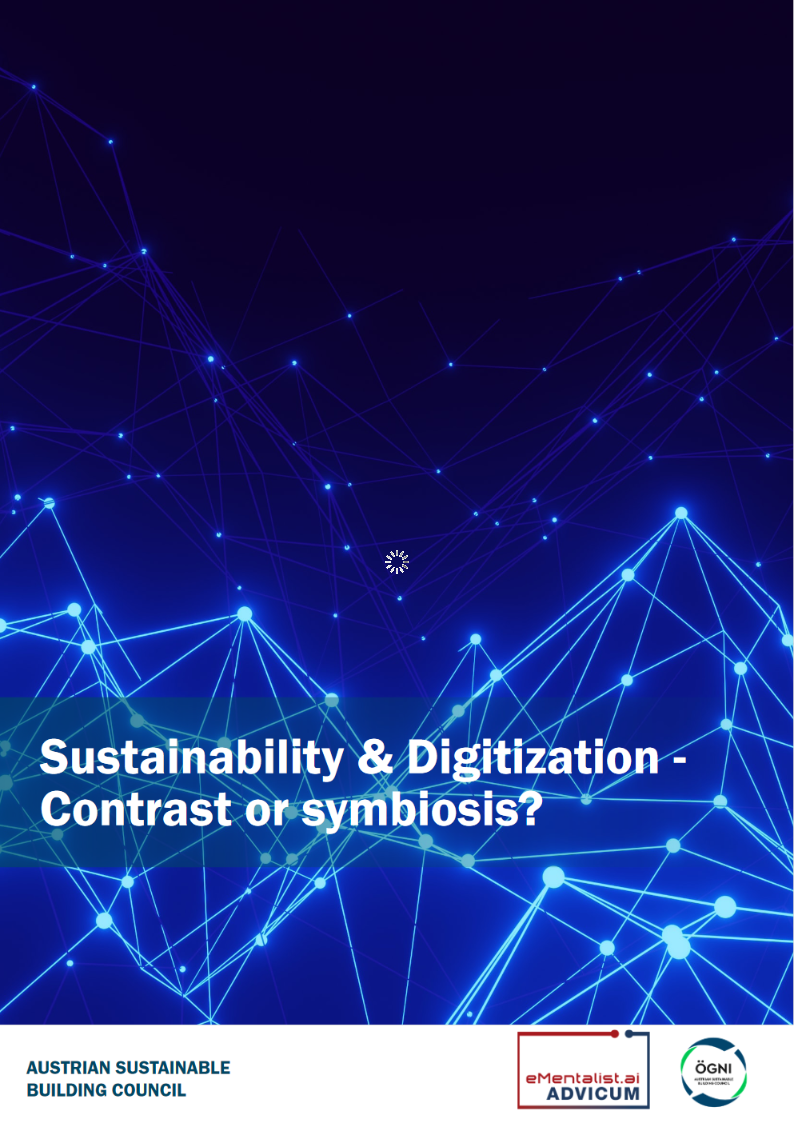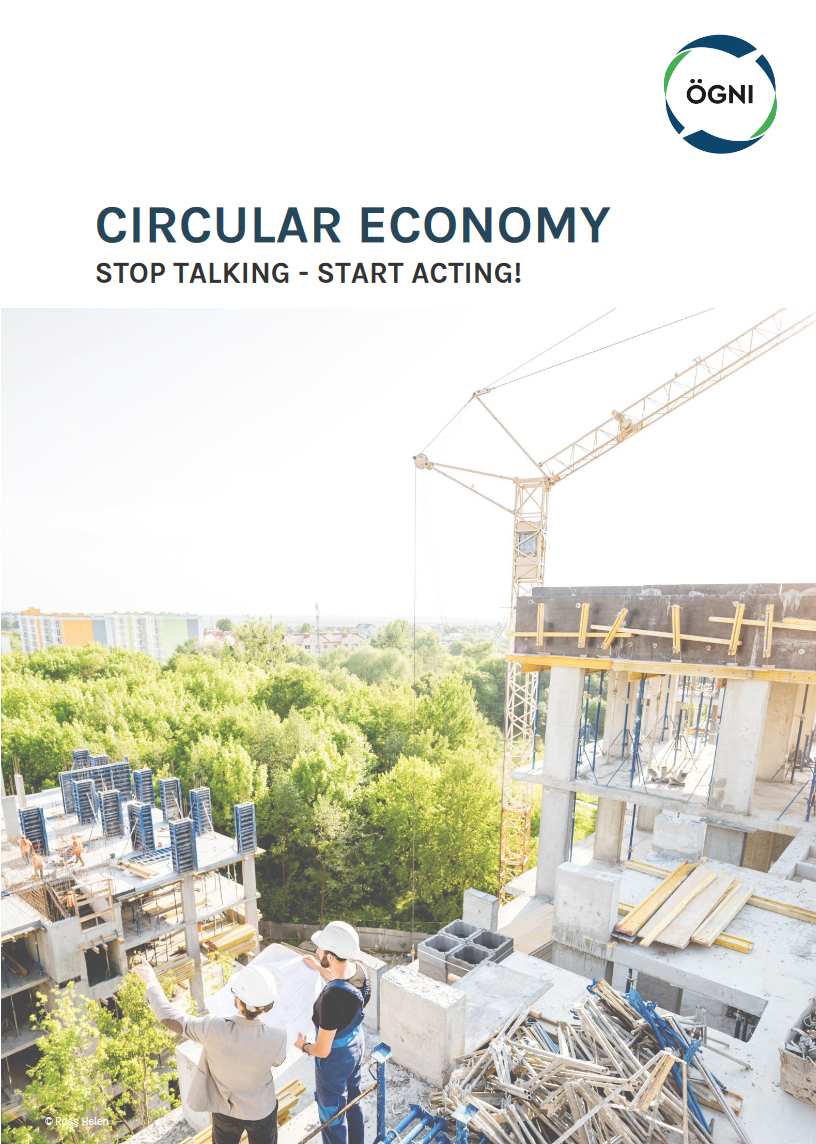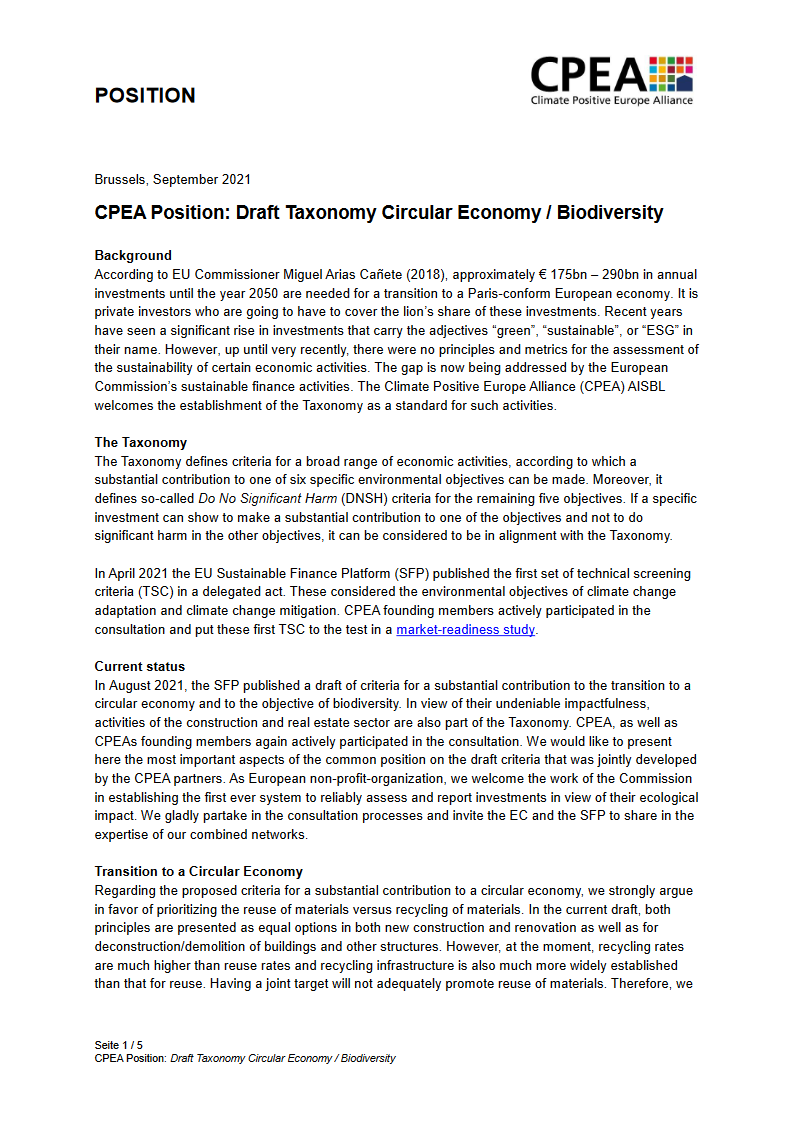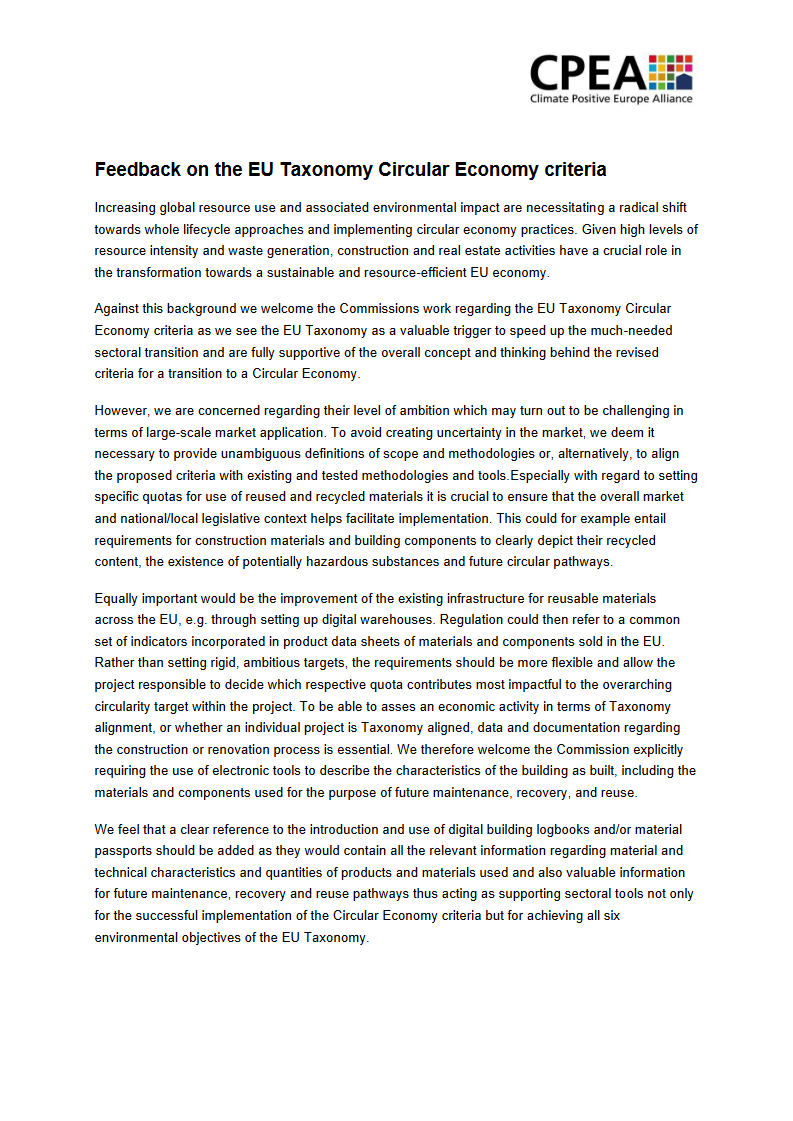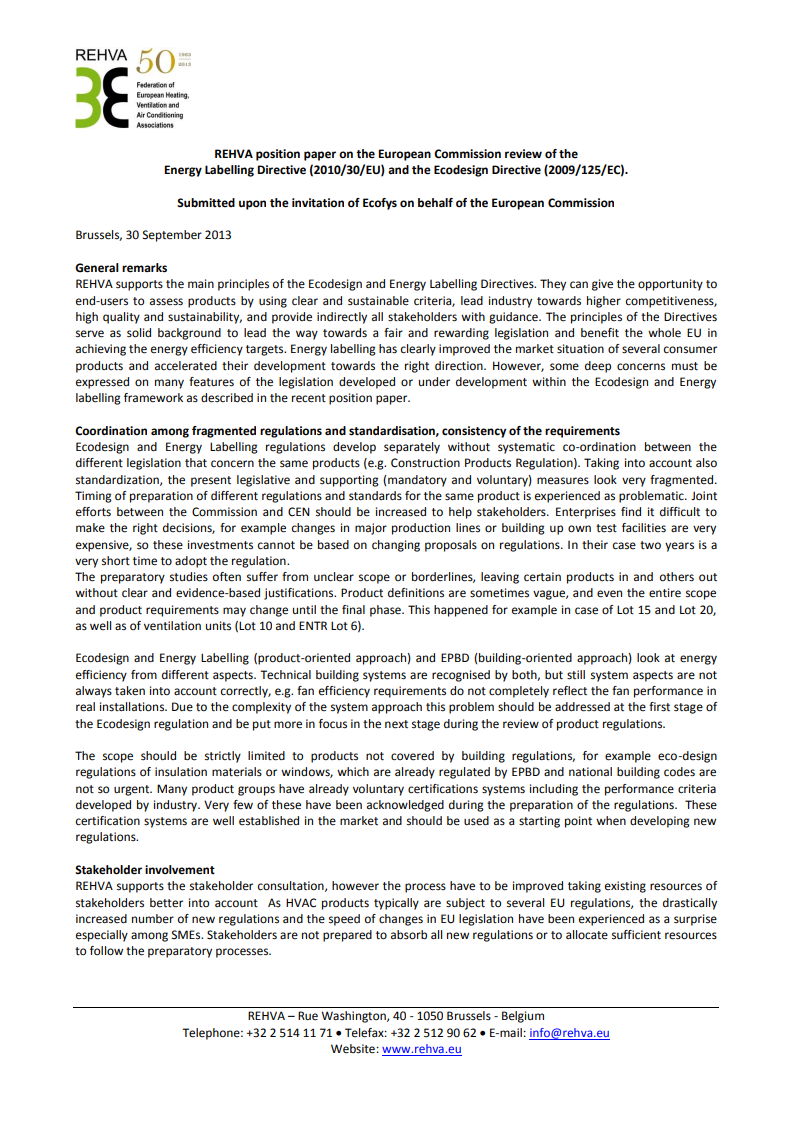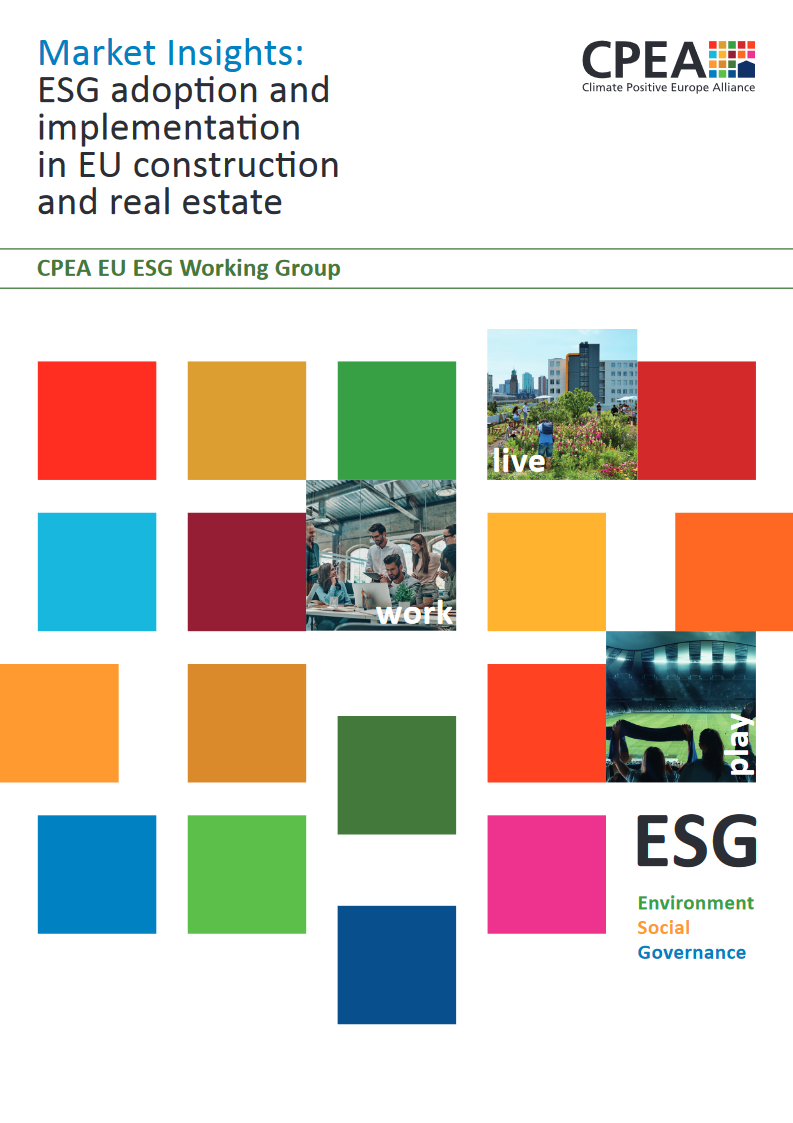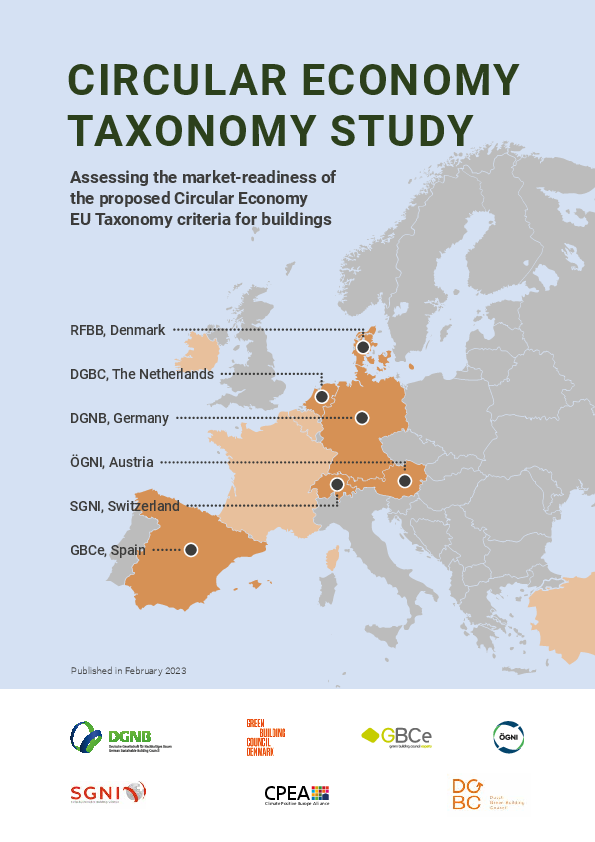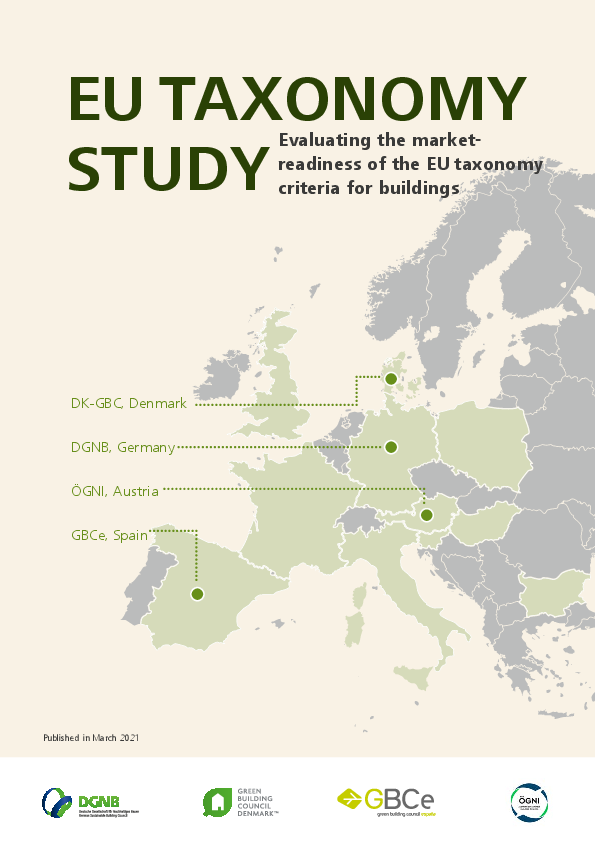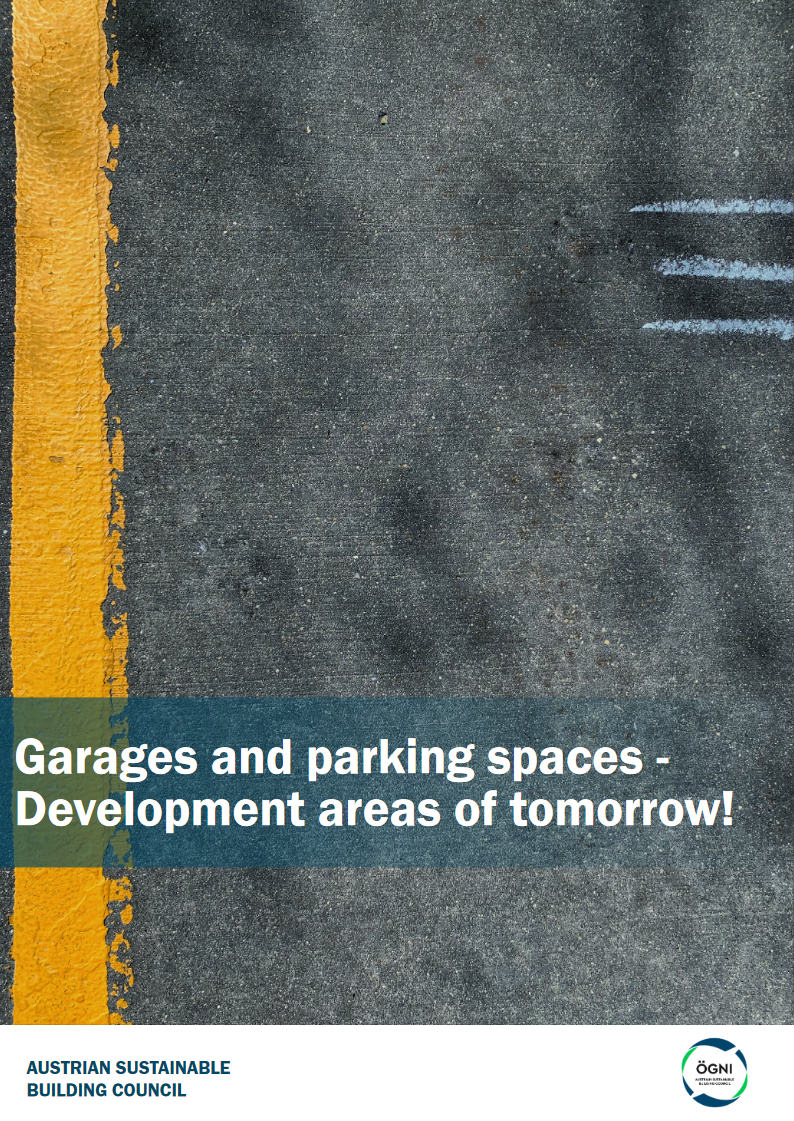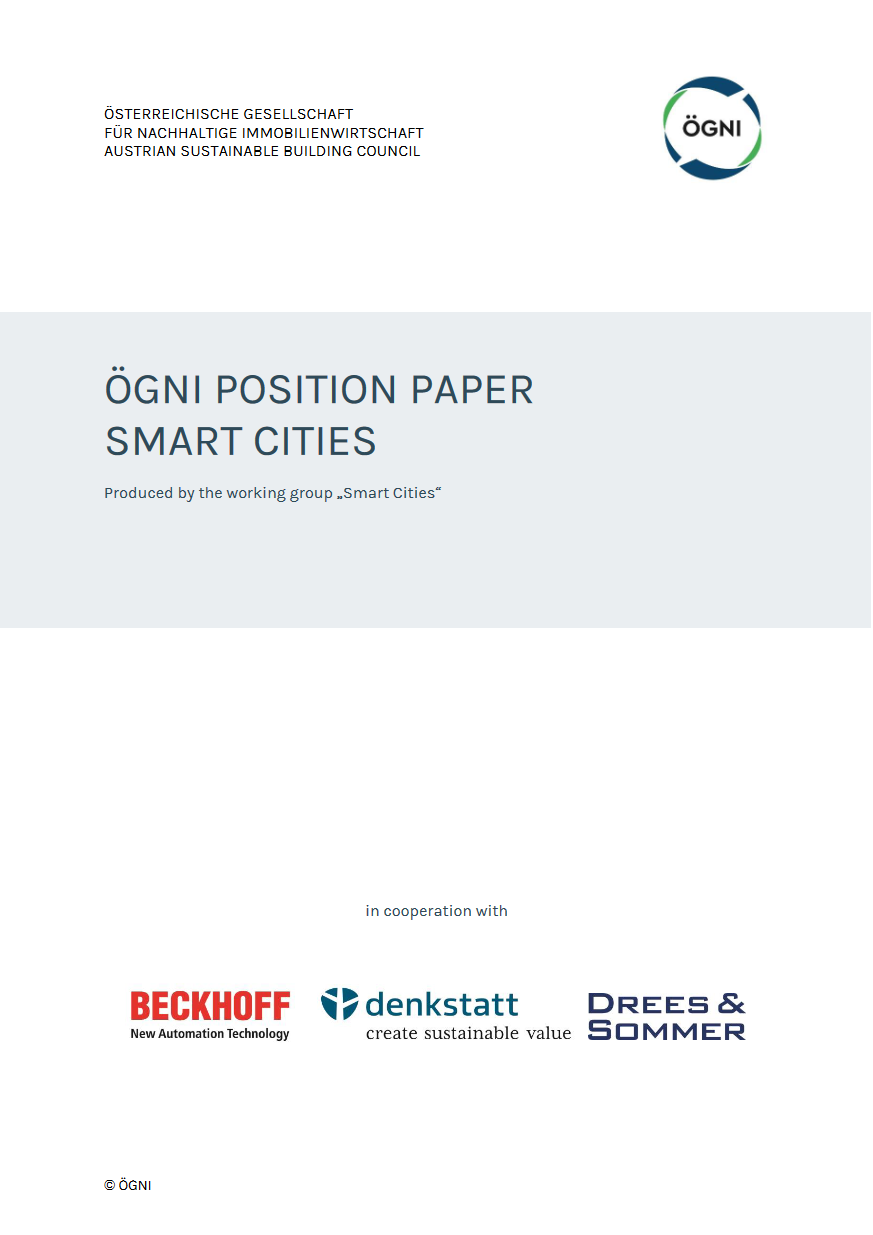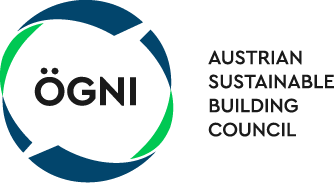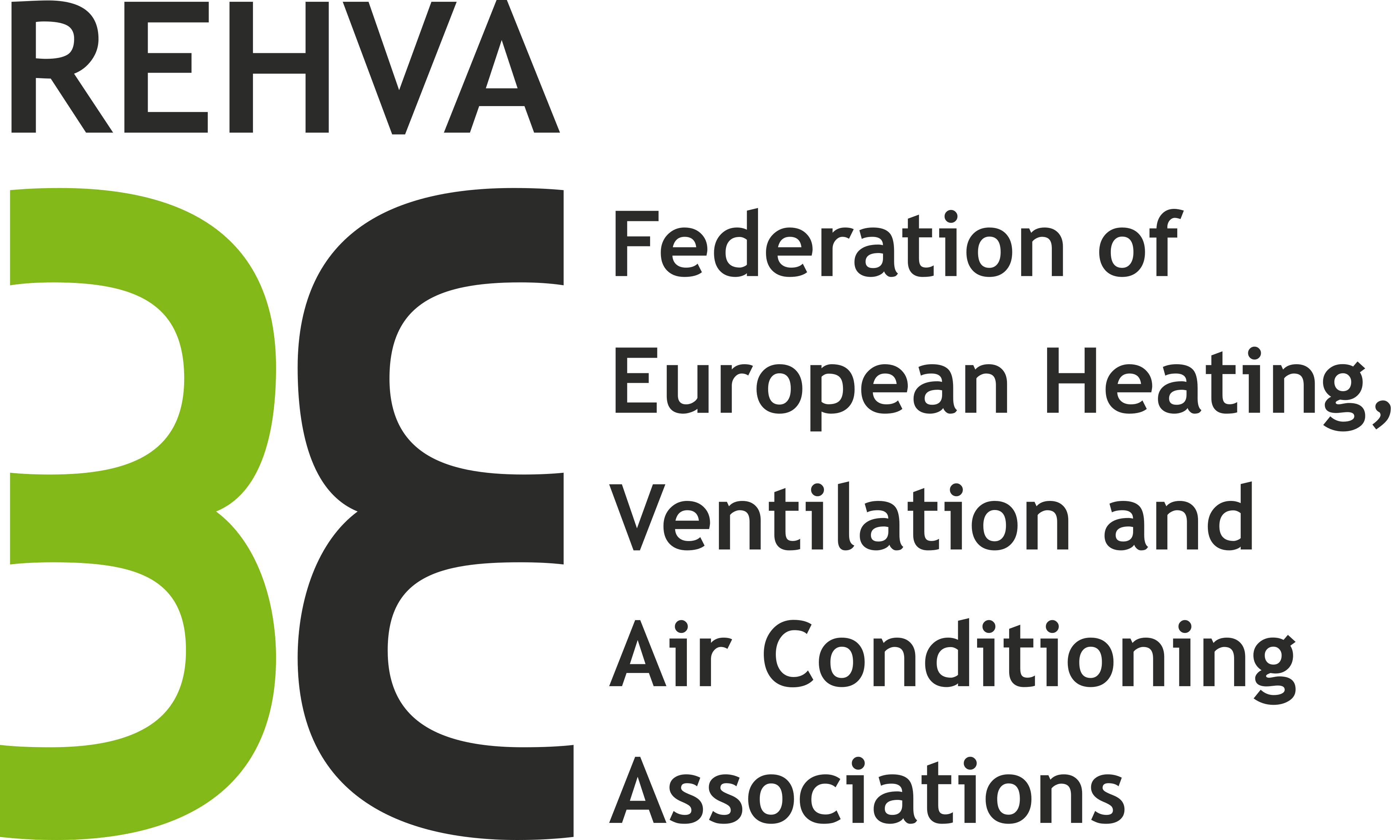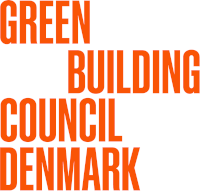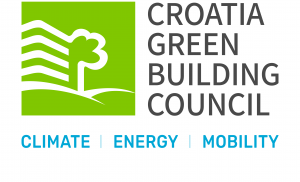CPEA and its members publish documents on various topics, which can be accessed here. The key thematic areas are
Published by DGNB on May 3, 2023
“Act now, remove barriers now, collaborate now” is the motto of the publication “Guide to Climate Positive Building Stock”, which shows how building stock can become climate positive. It was developed as part of the EU project #BuildingLife. The first part of the brochure provides information on the status quo of building stock at policy level. Furthermore, it identifies 50 of the most important measures for a common path towards climate-positive building stock. The report is addressed at all stakeholders in the building and real estate sector, as well as decision-makers in local governments, science, politics and finance.
Find the German version here.
Published by ÖGNI on Apr 19, 2021
How do facades actually have to be designed today so that they will meet the requirements in 40 years’ time?
A working group of the ÖGNI in cooperation with cross-sector experts dealt with the answer to this question in five sessions. The focus of the results was that a facade of the future will serve more than purely fulfilling functions, such as protection against the weather and environmental influences. From the point of view of architecture, the building envelope makes a significant contribution towards resource conservation, climate change adaptation and climate protection. On this basis, five theses were formulated. For the facade of the future, a long-term, sustainable view and an adaptation to the achievement of the climate goals by 2030 is required.
Find the German version here.
Published by DGNB on Feb 8, 2021
The publication “Building for a better world” shows how buildings can contribute to the UN Sustainable Development Goals (SDGs). It introduces the reader to the topic of sustainable development and highlights that up to 15 SDGs are addressed through sustainable construction. Using the example of erecting new buildings, using and operating buildings and developing districts, the report shows that the DGNB certification system can be used as a planning tool to translate the SDGs into real projects. Sustainable development thus becomes tangible.
Find the German version here.
Published by DGNB on Aug 13, 2020
In the Framework, the DGNB has compiled its definition of carbon neutrality as well as the corresponding explanations regarding procedures. The aim is to create clarity on the market and to educate all stakeholders with regard to effective optimisation approaches for reducing the CO2 emissions of their properties. Among other things, the Framework describes the rules for CO2 accounting of buildings and sites. It also serves as a basis for developing building-specific climate action strategies. Additionally, requirements and possibilities for CO2 reporting and quality assurance are presented.
Find the German version here.
Published by ÖGNI on Apr 28, 2020
The advancing digitalization in the construction and building sector is already contributing to significant changes. Energy management is becoming a central issue. As an integrative component of building automation, it contributes to increasing energy efficiency and using renewable energies more efficiently. Active energy services can be realized, for example, through additional storage options in the building. If such a building acts as a grid-supported storage facility, it actively contributes to relieving the load on the electricity grid. A suitable management of consumers, electricity storage facilities, generation plants and charging stations is essential, however. A platform is needed that connects, measures and controls all devices in order to generate the ideal energy flow and also distribute surplus energy in a sensible manner.
Find the German version here.
Published by DGNB on Mar 23, 2020
The publication “Climate positive: now!” shows how every building can make a contribution to climate protection and offers assistance in the form of pragmatic and practical implementation. It provides more detailed background information on why the construction and real estate sector plays a central role in climate protection and why a paradigm shift is needed in the way we treat our buildings. In addition, areas of action are named that have a significant influence on making buildings climate-neutral.
Find the German version here.
Published by DGNB on Mar 21, 2019
The fact that our current lifestyle is not doing our environment any good isn’t breaking news at the time of this current IPCC report. When it comes to actively applying solutions, however, too many people hide behind the two small words: “yes” and “but”. Why it is time to turn this “yes, but” into a “yes, count me in!”, and how this can succeed is addressed in this publication. It clears up the most common prejudices about sustainable building and vividly demonstrates why sustainable construction is essential.
Find the German version here.
Published by ÖGNI on Feb 22, 2023
Is there a connection between sustainability and digitization? Is digitization automatically sustainable? If so, how is sustainability defined in connection with digitization?
These questions were addressed by experts from the construction and real estate industry within the framework of the ÖGNI working group “Digitization”. In the course of developing this position paper, the working group came to the conclusion: Improving sustainability in the real estate sector is not possible without digitization!
This synergy between digitization and sustainability can only work if data is available and sustainability can hence be made measurable and thus also comprehensible / tangible. Numerous properties are not yet in a position to record and provide the values for measurable sustainability.
Find the German version here.
Published by DGNB on Apr 25, 2019
We spend up to 90 percent of our time in buildings. We live, learn and work in them, we have contact with our fellow humans, seek shelter from external influences, and in the best case they provide us with space for recuperation. Yet, do people really take account of this central role during the design of buildings or their conversion? This publication creates a bridge: Between the designers and architects with their ideas and their expert knowledge on the one side, to the people who have the responsibility of making sure that employees and customers, residents and guests, students and school pupils, have an adequate working, living, and learning environment.
Find the German version here.
Published by ÖGNI on Feb 04, 2019
ÖGNI has set itself the task, together with the participants of the working group “benchmarks in operation”, of defining criteria that describe these comfortable room conditions. We want to convert comfort into verifiable and comprehensible values. In addition to definitions for comfort ranges for criteria such as room air temperature, CO2 content, light quality or room humidity, this position paper also deals with requirements for technical building equipment and its maintenance, the importance of data monitoring and the correct analysis of these measured data. In addition, we have tried to describe the future requirements for facility management and to point out the possibilities of digitization in the real estate industry.
Find the German version here.
Published by ÖGNI on Sep 20, 2018
This position paper is intended to make clear that the mere provision of space for living and working is not a promising business model for the future. In the future, those buildings will be successful in which space with infrastructure is offered. The range extends from the basic equipment for digitisation to mobility concepts and the operation of shared areas.
Find the German version here.
Published by REHVA on Nov 06, 2013
REHVA IAQ policy position paper on indoor air quality and climate addressing policy makers and authorities. The paper points out the potential conflicts between energy efficiency, occupancy and indoor air quality and climate. It uses the result of the HealthVent project and other EU projects, and is linked to the work of a new REHVA Task Force aiming at preparing further position papers in the future on Indoor Environment.
Published by DGNB on Mar 1, 2023
The building materials selection has a major influence on the overall result of a sustainable building. But what really matters when it comes to choosing materials? And what information is really relevant, far from trends and marketing statements? The report “Building materials and sustainability” provides planners and builders with principles and methods to guide them in their material decisions. At the same time, it creates a basis for communication with building product manufacturers. In a compact form with numerous graphics, checklists and a selection of building material alternatives, it motivates implementation.
Find the German version here.
Published by ÖGNI on Aug 11, 2022
A circular economy is regenerative by design, contributes to climate neutrality and promotes a sustainable, high-quality industry. Digital innovation, climate protection, and the creation of regional jobs lead to an increase in the resilience of local economies and enable greater independence from global supply chains.The construction industry is particularly affected by this due to a diverse and branched value chain, but at the same time has enormous potential as a result. The creation of a circular economy requires a broad network of partnerships and alliances between both new and established players in order to jointly create a completely new economic system. It requires a change in the business models of all actors involved in this value chain. The working group and the ÖGNI are committed to ensure that this transformation towards a circular economy succeeds.
Find the German version here.
Published by DGNB on Sep 18, 2019
In recent years the term “circular economy” has become more widespread and has also become a relevant topic in construction. The concept upon which the circular economy is based has great potential: The availability of resources should be ensured for future generations through their appreciation, as well as reuse and recovery. The circular economy is therefore an elementary building block of sustainability and it transfers sustainability to society and its individual sectors.
Find the German version here.
Published by CPEA on Sept 2021
The European Sustainable Finance Platform has published the first draft of the requirements for environmental objectives on circular economy and biodiversity as part of the EU taxonomy. The Climate Positive Europe Alliance (CPEA) participated in the consultation and published a corresponding position paper. For the environmental objective “circular economy”, it is recommended that the economic activities “new construction” and “deconstruction” should not be considered separately. Furthermore, the terms “reuse” and “recycle” should be defined more clearly. The requirements of the environmental objectives “biodiversity” are not ambitious enough in the opinion of CPEA and its members.
Published by CPEA
Together with its members, CPEA gave feedback on the EU Taxonomy Circular Economy criteria.
“CPEA welcomes the Commissions work regarding the EU Taxonomy Circular Economy criteria as a valuable trigger to speed up the much-needed sectoral transition and is fully supportive of the overall concept and thinking behind the revised criteria for a transition to a Circular Economy. However, we are concerned regarding their level of ambition which may turn out to be challenging in terms of large-scale market application. To avoid creating uncertainty in the market, we deem it necessary to provide unambiguous definitions of scope and methodologies or, alternatively, to align the proposed criteria with existing and tested methodologies and tools.”
Published by REHVA on Sept 30, 2013
REHVA comments on the European Commission review of the Energy Labelling Directive (2010/30/EU) and the Ecodesign Directive (2009/125/EC). The following recommendations are made: Ecodesign and Energy Labelling regulations have to be coordinated with other linked legislation (EPBD) and product certification processes including the work of CEN; Stakeholders should be involved during the entire regulatory process and informed about changes within the legislation; The problem of contradictions between health, environmental and energy efficiency requirements has to be handled; EU level support is necessary in the field of market surveillance and information
Published by DGNB on Apr 23, 2019
This brochure explains the function and application of the construction product platform DGNB Navigator. The DGNB Navigator combines the information offer from the manufacturers with the enquiries of designers on the one platform. Furthermore, it represents an important bridge between construction products and the DGNB certification system for buildings, in that it provides the requested data for the building’s certification in accordance with DGNB.
Find the German version here.
Published by DGNB on Nov 29, 2018
These guidelines aim to promote the increased use of life cycle assessments in the planning process, by demonstrating the relevance and potential of this tool. Designers and building contractors are additionally provided with arguments for employing these methods as an optimisation tool as early as possible in the planning and implementation process, and the sustainability effects that can be achieved as a result of this are emphasised. Furthermore, the reader is presented with examples of how the results of life cycle assessments are communicated and can serve as supporting arguments for making more environmentally sensible decisions in the course of the planning process.
Find the German version here.
Published by RFBB on Nov 02, 2023
As EU initiatives under the EU Green Deal,CSRD and the proposed CSDDD aim is to foster sustainable and responsible corporate behavior and to anchor human rights and environmental considerations in companies’ operations and governance. This guide provides inspiration to actors within the construction sector on due diligence, as well an overview of potential human rights challenges and mitigation measures to consider across the construction value chain.
Published by CPEA on Sept 2023
Against a background of a rapid rise in construction and real estate market engagement with ESG related topics and discourses and an equally growing number of ESG initiatives, this new report by the CPEA ESG Working Group provides a snapshot of where different European players within the construction and the real estate industry currently stand in relation to ESG strategy development, implementation and related disclosures, looking at drivers, risks and challenges and potential solutions.
Published by CERTIVEA on Mar 2023
CERTIVEA released a report consisting of a decryption of the EU taxonomy impacts on the commercial real estate sector, and highlighting the methodology used to establish operational correspondences between the technical criteria of the Green Taxonomy and those of HQE certifications.
Find the French version here.
Published by CPEA in Feb 2023
In this study, a study consortium of seven organisations were joined by 29 market participants from Austria, Belgium, Denmark, France, Germany, Ireland, Spain, Switzerland, The Netherlands and Turkey. The proposed Circular Economy Taxonomy criteria for building activities were applied to 38 real building case studies. The study gives valuable insights into challenges, which were faced by the financial and real estate organisations and provides recommendations and practical solutions for applying the criteria.
Published by CPEA in Mar 2021
For this study, four of Europe’s most renowned Green Building Councils were joined by 23 financial and real estate organisations. The proposed Taxonomy criteria for building activities were applied to 62 real building case studies. The study gives insights into challenges the market participants faced and provides practical solutions and recommendations for applying sustainability criteria in financial transactions.
Published by REHVA in 2020
Investments into sustainable building projects will need to be multiplied on a large scale and accelerated if the EU wants to accomplish carbon‐ neutrality in the coming decades. Unfortunately, many building projects show a significant gap between expected energy performance in the design phase and the real performance in operation. Quality Management Services help to de‐risk investments into green buildings. This publication introduces the QUEST Technical Manual, the QUEST Tool and the QUEST Data Engine and explains how their application can support de-risking of of green real estate investments.
Published by ÖGNI on Feb 22, 2023
The position paper is aimed on the one hand at cities, states and municipalities, and on the other hand at all actors in the construction and real estate industry who are concerned with the future of garages and parking areas and who aim to actively address the associated challenges.
Find the German version here.
Published by ÖGNI on Feb 05, 2018
Although the term „Smart City“ is widely used, a clear definition is still missing. This allows for various interpretations. As a leading force in Austria’s sustainable real estate, ÖGNI has already contributed to the discussion of „sustainable-construction“. With this position paper, ÖGNI wants to provide a much needed input to specify the idea of „Smart Cities“.
Find the German version here.


